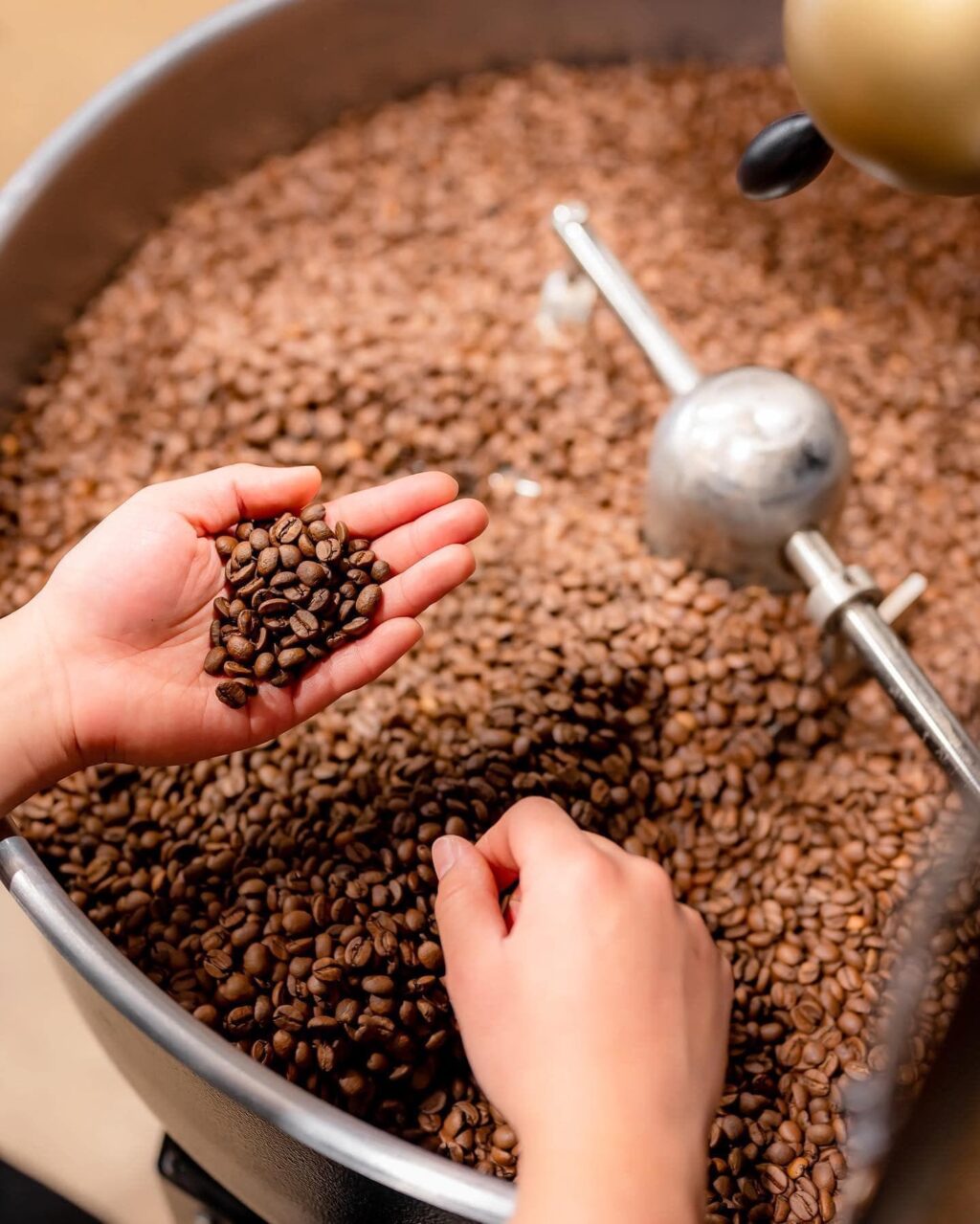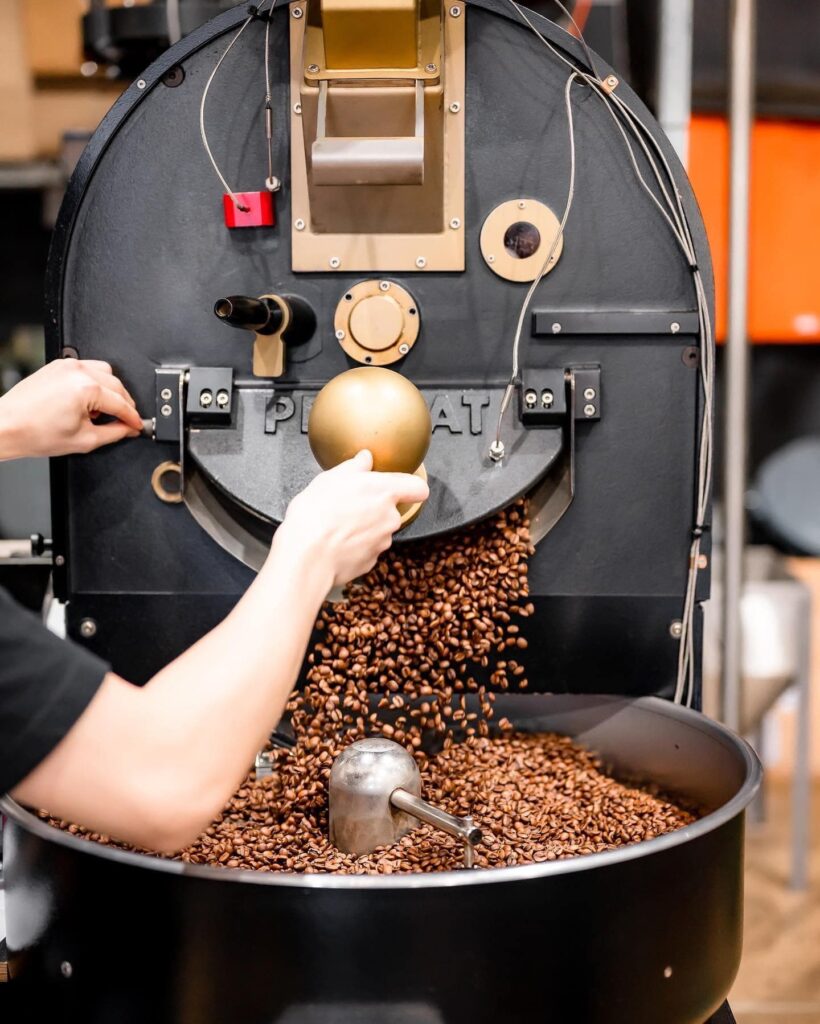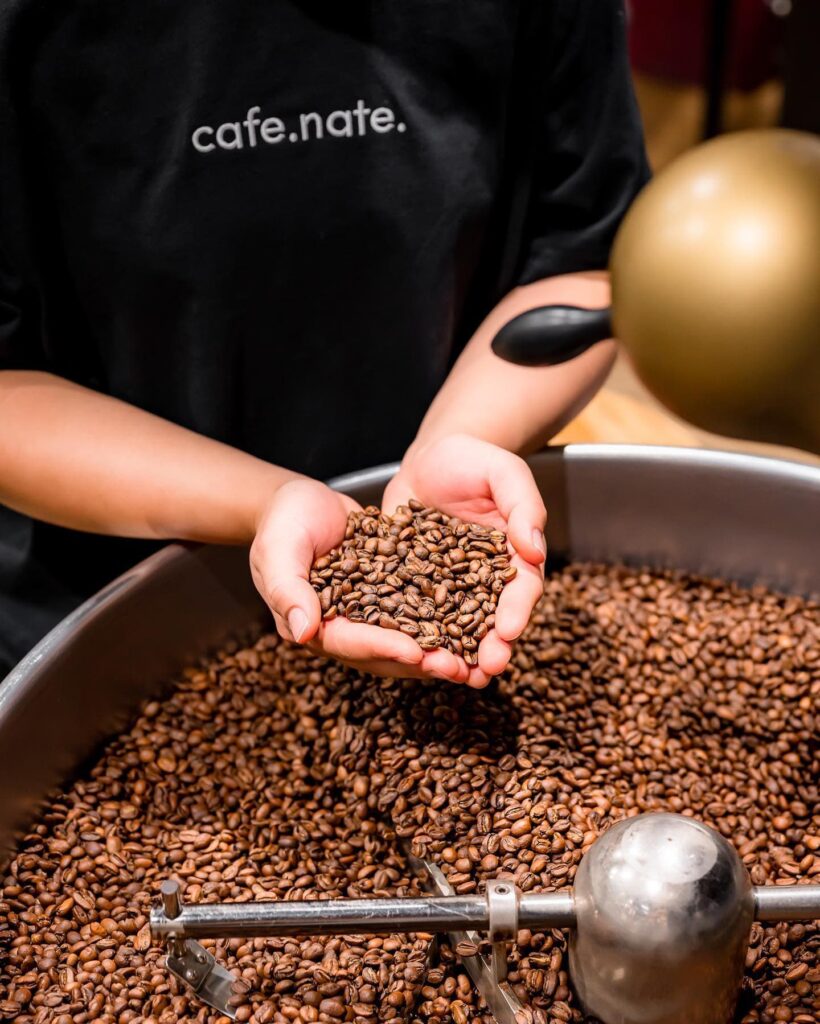Coffee Roasting: Science, Art, and Innovation in the Pursuit of Perfect Beans
7 min read
If you enjoy brewing coffee, you might wonder why coffee beans produce different aromas and flavors. It all starts with coffee roasting, which blends science, artistic skill, and innovation. Roasting coffee is more than just applying heat; it’s a complex process involving various chemical reactions that bring out the beans’ taste and aroma.
Roasting coffee goes through several stages, each contributing to the distinct taste and aroma when brewed. Explore beyond just what the coffee roasting process is; learn about its benefits, levels, and the phases green coffee beans must go through to become a delightful cup.
What is coffee roasting?

Coffee roasting is the process that transforms raw green coffee beans into dark coffee. It’s the first step towards enhancing the flavor and aroma of coffee beans. Roasted coffee beans carry a distinct aroma and are used in various brewing methods. It’s no wonder that this process is crucial for making coffee beans consumable.
The coffee roasting process is far from simple. It’s a complex interplay of factors that significantly influence the final taste and aroma of coffee, resulting in a rich variety of flavors with every sip. This intricate process involves careful control of temperature, precise timing, and a variety of roasting methods, each contributing to the unique character of the coffee.
These factors contribute to the development of different flavors and aromas in coffee beans. Coffee roasting is fundamental for coffee enthusiasts, whether done on commercial roasters or at home.
The Purpose and Function of Coffee Roasting

Coffee roasting is a meticulous craft that blends both science and art. Roasters, with their keen eye and precise control, meticulously monitor factors like temperature and duration to achieve the desired roast level, be it light, medium, or dark. Each roast level unveils unique nuances in the coffee beans, offering enthusiasts a rich tapestry of flavors and experiences.
Moreover, the process of roasting coffee beans is a sensory journey that captivates the senses. The scent of freshly roasted coffee drifts through the atmosphere, inviting coffee enthusiasts with its soothing, captivating fragrance. The visual spectacle of the beans transitioning from green to a myriad of brown hues during the roasting process is a feast for the eyes, underscoring the artistry behind each batch.
Furthermore, coffee roasting plays a pivotal role in the sustainability of the coffee industry. By elevating the quality and flavor of the beans, roasters enhance the value of the product, thereby benefiting coffee growers and the communities involved in coffee production.
Coffee roasting involves more than simply turning raw beans into a delightful drink; it’s about fostering moments of happiness and connection through a mutual appreciation for outstanding coffee.
3 different levels of roasting

There are three critical levels in the coffee bean roasting process: light, medium, and dark roast. These levels differ based on the temperature and duration of roasting. Each level produces coffee with a unique profile, including aroma, taste, and color, influenced by the roasting methods applied.
Light roast
Light roast is the lightest level of roasting, among others. Coffee beans for light roast are roasted at temperatures between 180 to 205 degrees Celsius for a short duration. Its taste has a crisp and light acidity, with a mellow body, providing a distinct flavor compared to darker roast levels.
The color of the beans tends to be light brown without visible oils. Light roast coffee has high caffeine and acid content, resulting in a fruity flavor profile with subtle acidity and gentle sweetness. It’s suitable for those who enjoy coffee with a light and fresh taste yet still has a fascinating complexity.
Medium roast
At the medium roasting level, the coffee produced exhibits several distinct characteristics. Typically, coffee roasted at this level will have moderate acidity and bitterness. The resulting color tends towards reddish-brown, and a pleasant aroma with a balanced body can be detected.
There’s a subtle sweetness from medium roast, although not overpowering. Coffee at this level is roasted at high temperatures, around 210 degrees Celsius, so it doesn’t produce oils within the beans. It contains lower caffeine content compared to higher roast levels.
Dark roast
Roasting coffee beans to a dark roast level is the most intense. The resulting coffee taste is very bitter, yet still enjoyable. When coffee is roasted at high temperatures, around 225 degrees Celsius, the beans turn dark and exhibit a shimmer on the surface. This gives a full-bodied taste and a more apparent sweet hint than other levels. Additionally, a distinct spice is sometimes noticeable when brewed. Dark roast coffee often carries a bold aroma with smoky and earthy undertones, adding to its complexity. Its robust flavor profile makes it an ideal choice for those who prefer a strong and profoundly satisfying cup of coffee.
The Process Phases of Coffee Roasting

Delving into the stages of the roasting process is a journey that leads to the perfect cup of coffee. Each step, from the initial green coffee beans to the final delightful aromas, is crucial in shaping the flavor profile and quality of the end product. The art of roasting lies in the meticulous monitoring and control of each stage, as they all contribute to the intricate flavors and aromas that coffee lovers worldwide cherish. Understanding this process is key to unlocking the full potential of your coffee beans.
Drying Phase
The initial stage of coffee bean roasting is called the drying phase. Its goal is simple: to reduce the moisture content in green coffee beans. Before roasting, coffee beans typically contain between 7% to 11% moisture. This means a significant amount of heat is needed to evaporate the water from the beans. This phase usually lasts about 3 to 5 minutes. An indication that the moisture reduction process has begun is when the coffee beans start absorbing heat and emitting steam.
Yellowing Phase
During the ‘turn in’ stage, also known as the yellowing phase, green coffee beans undergo significant changes. Moisture has been removed during the drying phase, causing the beans to change color from green to yellow slowly. At the same time, the beans will expand, shedding their thin outer skin called chaff. This chaff is separated in the roasting machine to prevent potential fire hazards. These first two phases are crucial because, if uneven, the outer part may appear cooked while the inner part hasn’t fully developed, resulting in an odd taste profile. Ensuring an even transition during these phases sets the foundation for a well-balanced and flavorful cup of coffee.
First Crack Phase
During this stage, the coffee beans begin to crack vertically, changing from a yellowish color to light brown within 2 to 3 minutes. This phase involves a chemical reaction as carbon dioxide and water vaporizes from the core of the coffee bean, building pressure until the bean cracks open. The characteristics of the coffee bean start to form during this phase, paving the way for further development. These characteristics include the emergence of the distinct flavor and aroma of the final brew.
Development Phase
After the first crack phase, coffee beans tend to have a softer texture on the surface, but not entirely. Following this phase, caution is needed because rapid chemical reactions occur after the beans first crack. Next is the development process, in which the final color of the coffee beans is determined. According to the roaster’s desired duration and intensity, this phase also determines the result, such as flavor and aroma. Monitoring this stage carefully is crucial to achieve the desired taste and smell.

Second Crack Phase
The second crack phase occurs when the coffee beans have reached sufficient heat and pressure, usually around 224 to 226 degrees Celsius. This is when gases and oils trapped inside the coffee beans start to escape during the roasting process. The beans will expand more than during the first crack. At this point, roasters typically stop roasting because the coffee beans have reached the desired profile. This phase is crucial as it determines the acidity level and flavor of the coffee produced. Understanding this phase helps achieve the desired taste and quality of the coffee beans.
Cooling Phase
After the coffee roasting process, the next step is to cool the coffee. This is crucial to maintaining its flavor quality. Once the coffee beans reach the desired roasting level, they are promptly removed from the roasting machine and transferred to the cooling area. This rapid cooling takes less than five minutes but plays a vital role. It preserves the coffee’s taste, aroma, and richness, ensuring it retains its distinctive characteristics.
Swift cooling preserves flavor quality and helps prevent coffee beans from moisture, which could lead to spoilage or even flavor deterioration. Therefore, rapid cooling is a step that must be considered in the coffee roasting process. Properly cooled coffee beans are fundamental to a delicious cup of coffee.
Resting Phase
The resting phase after roasting is crucial. Coffee beans undergo this phase for 1 to 3 days, depending on the type of bean. During this phase, they release accumulated carbon dioxide from the roasting process. Brewing too soon after roasting can produce a bitter and acidic taste. It’s best to store the coffee beans in a closed container in a conducive environment during this period. Keep them away from moisture and heat sources. This helps ensure the flavors develop properly before brewing.
Conclusion
Roasting coffee is like crafting a secret recipe to create delicious coffee beans. It involves carefully adjusting temperatures, paying close attention to timing, and genuinely understanding the coffee beans. All these steps are interconnected and crucial in producing a delightful cup of coffee.
Roasting coffee isn’t just about knowledge; it also requires the artistry of a coffee roaster. The key is the combination of deep knowledge about coffee, skill in adjusting temperature and timing, and innovation.
If you’re curious about coffee, don’t hesitate to stop by Cafe Nate, the Best Coffee Shop in Roseville, Sydney. Here, you can experience the delight of coffee beans processed with care and precision.



